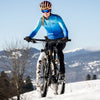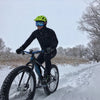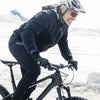How to Find Good Fishing Spots in Your Area
Utilize Official Resources and Authoritative Channels
-
State Fisheries Department Websites
Every state’s fish and wildlife agency (such as California Fish and Wildlife or Florida FWCC) publishes officially recommended fishing spots, marking water types (freshwater/saltwater), fish species, catch restrictions, and real-time fishing conditions.
-
Examples:
- Texas’ TPWD fishing location map allows filtering lakes and rivers by region.
- New York’s DEC fishing hotspots mark popular spots for trout, bass, etc.
- Key information: Check for seasonal opening restrictions and fish size/quantity quotas (e.g., salmon may require specific tags).
-
Federal and Local Park Administrations
Waters in national parks (e.g., Yellowstone) and state parks are often ecologically sound and well-regulated. Some parks provide fishing guides (e.g., lake trout spots in Michigan state parks).
Local municipal websites may list fishing permits for community lakes and rivers (e.g., fishing spots along Lake Michigan in Chicago). -
Fisheries Hotlines and Consultation Services
Some states offer fishing consultation hotlines (e.g., Florida’s 850-488-4676) to inquire about recent fishing conditions, bait recommendations, and no-fishing zones.
Leverage Digital Tools and Online Communities
- Fishing-Dedicated Apps and Maps

- Fishbrain: Users share real-time fishing spots and catch photos, marking fish species and water depth (premium features require payment).
- Google Maps/Baidu Maps: Search "Fishing Spot" or "Public Fishing Area" to view user reviews and photos (e.g., reviews of Kachess Lake near Seattle’s Mount Rainier).
- Nautical Charts: Coastal areas can use NOAA’s interactive maps to find reefs, shipwrecks, and other fish aggregation zones.
- Social Media and Forums
- Search for "XX State Fishing Enthusiasts" groups on Facebook (e.g., "California Fishing Club"), where members often share hidden spots and daily catches.
- On Reddit’s r/fishing section or state-specific forums (e.g., r/TexasFishing), ask for recommended locations in specific areas (e.g., "Beginner-friendly freshwater spots near Dallas?").
-
Weather and Tide Tools
Coastal fishing requires monitoring tide times. Use Tide Graph or local weather station data—fish are typically active during high and low tides (e.g., high tide makes it easier to catch groupers in Florida’s Keys).
Local Tackle Shops and Fishing Clubs
- Visit tackle shops (e.g., Bass Pro Shops or community stores) and ask staff about "recent popular fishing spots" or "best baits"—they often provide precise advice due to their local water knowledge (e.g., Colorado tackle shops recommend trout spots on the Arkansas River).
- Join local fishing clubs (e.g., "Long Island Fishing Association, New York") to participate in events or access member-exclusive spot maps.

- Observe and Explore Public Waters

- Freshwater areas: Focus on river confluences, reservoir shallows, and vegetated zones (where bass and bluegill gather), or under bridges and piers (shaded areas where fish are more active in summer).
- Saltwater areas: Piers, breakwaters, and mangrove edges (suitable for catching snapper and mackerel), or charter boats to offshore reefs (confirm permits first).
- Hidden tips: Use satellite maps (e.g., Google Earth) to scout unmarked creeks and ponds—public waters along private land edges may have fewer people and more fish.
-
Participate in Fishing Events and Tournaments
States often host free fishing days (e.g., "National Fishing and Boating Week" in June), where popular spots open with on-site guidance (e.g., Lake Sammamish fishing day in Washington).
Precautions: Compliance and Safety
- Confirm permit coverage: Some state park waters require additional park fishing permits (e.g., California state parks need both a state fishing license and a park permit).
- Avoid no-fishing zones: Official websites mark "protected waters" and "spawning-season no-fishing areas" (e.g., parts of the Yellowstone River in Montana prohibit trout fishing in spring).
- Ecological protection: Adhere to the "catch and release" principle (especially for endangered species), use barbless hooks, and avoid polluting waters.
Example: Los Angeles, California Area
- Official recommendations: California Fish and Wildlife’s website lists Pyramid Lake (bass, catfish) and Castaic Lake (trout, salmon).
- Community experience: On Reddit’s r/LAFishing, users often share sea fishing experiences at Palos Verdes Pier (requires a saltwater fishing license).
- Field exploration: Shallow areas in the lower San Gabriel River (free public waters, ideal for beginners to catch sunfish).

By combining the above methods with your state’s specific resources, you can gradually identify suitable fishing spots.
Categories
Recent Posts

Newsletter Signup
Enter your email to receive daily news and get 20% off coupon for all items.
Popular Products





